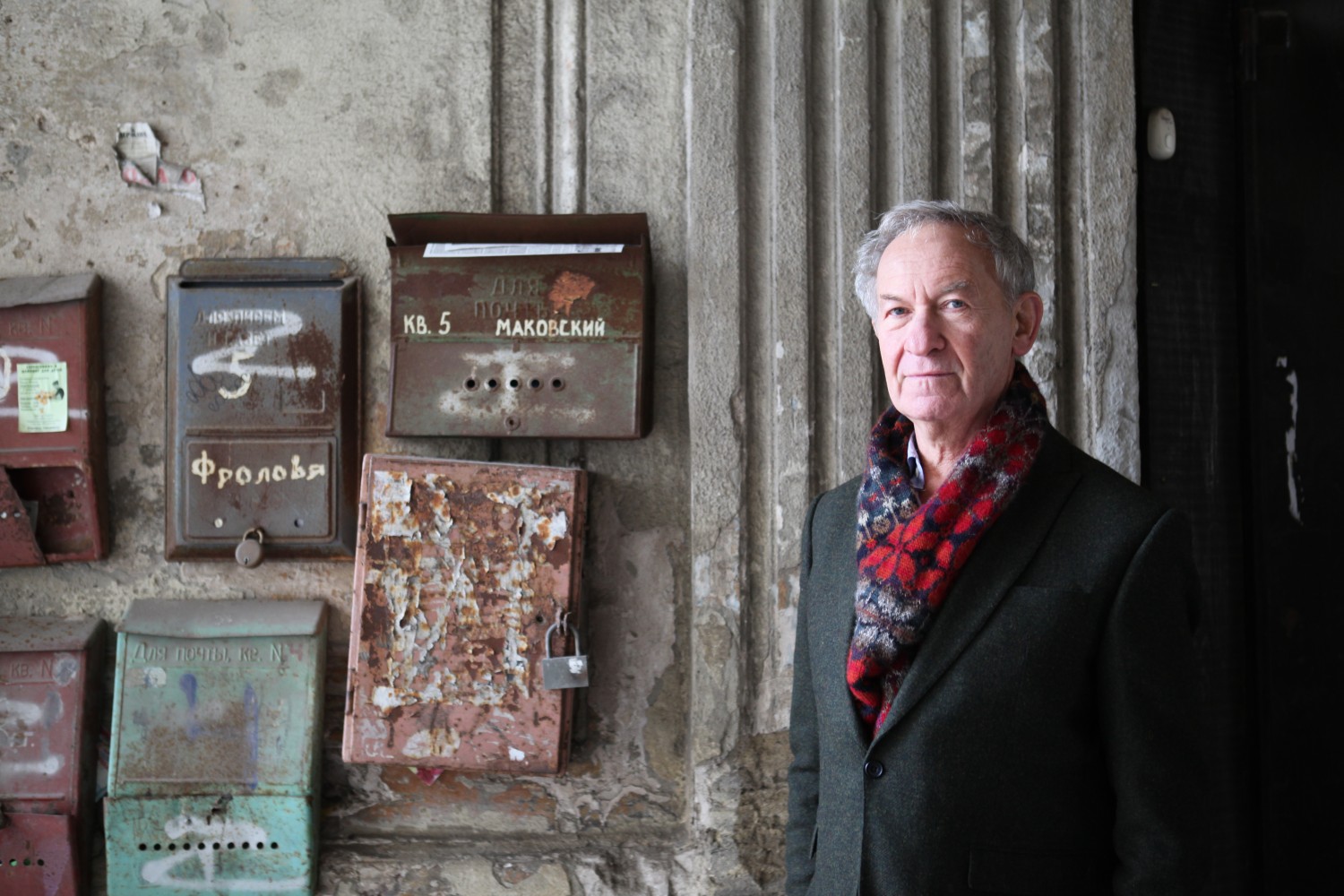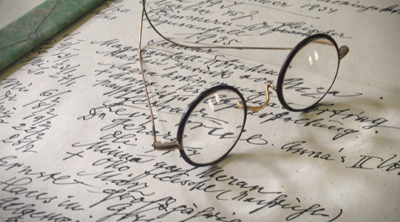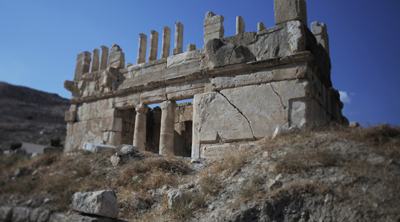Q & A With Simon Schama
Award-winning author and historian Simon Schama has written and presented 50 documentaries on art, literature, and history throughout his illustrious career, including The Power of Art, Rough Crossings, and more recently, The American Future: A History, Obama’s America, John Donne, and Simon Schama’s Shakespeare. His latest series, The Story of the Jews With Simon Schama, follows him as he travels from Russia and the Ukraine to Egypt, Israel and Spain, exploring the imprint that Jewish culture has made on the world and the drama of suffering, resilience and rebirth that has gone with it.
The five-part series is, at the same time, a personal journey for Schama, who has been immersed in Jewish history since his postwar childhood in London.

THIRTEEN spoke with Schama about his work on the series, his personal connection to the subject, and more.
Why did you decide to do a television series exploring the story of the Jews?
Jewish history has been in my cultural DNA since I was a child growing up in post-war London. In the midst of that dark, gray, lamenting monochromatic world of the 50s, I had a sense that both Jewish and English history were full of color and light and animation. So when the BBC approached me about doing this series, I knew I had to seize the opportunity to tell a richer story about the Jewish experience — a story full of life and hope and poetry, and which transcends the deeply somber notes of the Holocaust without for a minute disrespecting the magnitude of that catastrophe. And with highly toxic anti-Semitism on the rise in Europe, this was an ideal opportunity to highlight this issue to a U.S. audience.
In the first episode, you say that as a child, Passover was your favorite holiday. Why is it so special to you?
There is a famous commandment in the Bible saying “zakhor” – remember. Passover takes place in the home rather than the synagogue and centers around an epic meal – the seder – so you remember Passover as storytelling, you remember it in food, and you remember it in the family. The essential thing is that you tell the story and become immersed in food symbolism, which I absolutely love. I used to have a monthly cookery column and am a big cook, so that whole sense of connecting what one does with food to one’s cultural identity has always been fascinating to me.
The other thing that appealed to me as a kid who was going to grow up to be a historian is that there’s a lot of politics in Passover. It’s genuinely a story of the liberation of a people. It’s a story of people making up their own institutions as they go along, of people adopting a set of laws and immediately violating them. It has all those extraordinary things that happen in history.
The fourth episode, “Over the Rainbow,” examines the shtetls of Eastern Europe. How has shtetl culture left its mark on the modern world?
We can see the influence of this unique and wonderfully fertile culture in everything from the revolutionary politics of the Soviet Union to the popular culture of Tin Pan Alley and Hollywood, and of course, in present-day New York City. As we journey back to the remarkable lost world of the shtetl in episode four, we also find the roots of Hasidism: mystical, esoteric, almost seductive in its intensity. This traveling, portable world of music, of writing, of fantastically visionary stories is the world we find in the works of Sholem Aleichem, in his Tevye stories and Fiddler on the Roof, and in his wonderful novel Wandering Stars, about the colorful world of the Yiddish theatre. It’s the world that flourished years ago and continues to thrive in what I like to call the “mega-shtetl” of the Lower East Side, and it’s a world that continues to have a deep impact in America and elsewhere today.
Do you think the dilemma of “how to stay Jewish in a non-Jewish world,” as you call it in episode two, continues to influence Jewish life today?
Yes, it absolutely does. The most gloomy prognosis about Jewish life is that it will disappear between the two extremes of ultra-Orthodoxy on the one hand and total assimiliation on the other. But those are very exaggerated scenarios. Some of the most powerful moments in the series focus on Jews wrestling with the ambiguity of Jewish identity.
Do you think this program has the power to change people’s perception of the Jewish faith and culture?
I certainly hope so. I think many people feel removed or separate from the Jewish story because they think it’s just about the Holocaust and the Israeli-Palestinian conflict, when in fact there is so much more to the story, so much exuberance and vitality, and so much that connects people to this story over the millennia. I hope people will take away from the series that sense of connection, and the idea that the history of the Jews is everyone’s history too.
You were born in England, but have lived in America since 1980. Are there differences between Jewish culture in London and in New York?
I think in New York, you can be more easily, more quickly, more fully Jewish, and in Britain, being a Jew is a slightly more complicated and apprehensive business. That said, I must add that a new and absolutely vibrant Jewish cultural center has opened in London, which does debates and cinema and concerts and readings and seminars and has all sorts of cultural offerings. It also has a wonderful restaurant, Zest. Actually, two of the best restaurants in London now are strictly kosher, which I think says something quite amazing about the growing vitality of Jewish life there.
You’re currently writing Volume 2 of The Story of the Jews, which will be published this fall. Any exciting discoveries?
I’m particularly excited about the things I’m discovering about the origins of Jewish show business, which date back to 16th century Italy and a troupe of actors called rather wonderfully “The Istrioni ebrei” — The Jewish Histrionics. They performed throughout Mantua, led by their manager and chief playwright Leone di Sommi. It’s astounding to think that everything we think of in terms of music, song and dance, and comedy coming out of the shtetl world actually had older tryouts in 16th century Italy. If I’m ever reincarnated, I want to be one of their acting troupe!
The Story of the Jews With Simon Schama is made possible by lead funding from The Paul & Irma Milstein Family. Major funding is generously provided by The Polonsky Foundation. Additional major support is provided by The Pershing Square Foundation, the Joseph S. and Diane H. Steinberg Charitable Trust, James and Merryl Tisch, Mortimer B. Zuckerman, the David Berg Foundation, Mr. and Mrs. Daniel Rose, and the Lemberg Foundation. Support is also provided by the Corporation for Public Broadcasting and PBS.
Find educational resources related to this program - and access to thousands of curriculum-targeted digital resources for the classroom at PBS LearningMedia.
Visit PBS Learning Media


